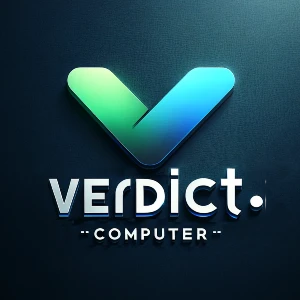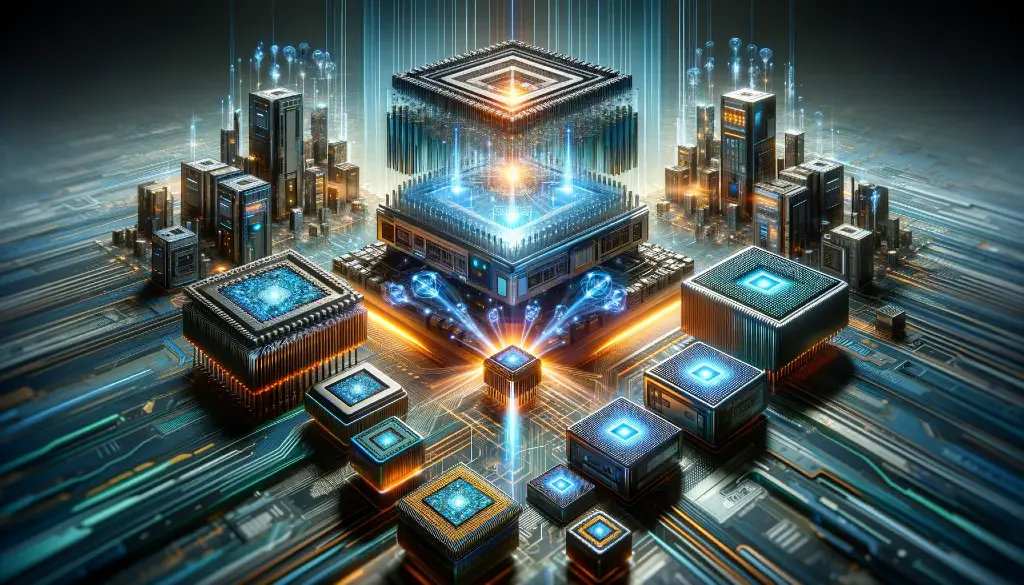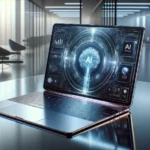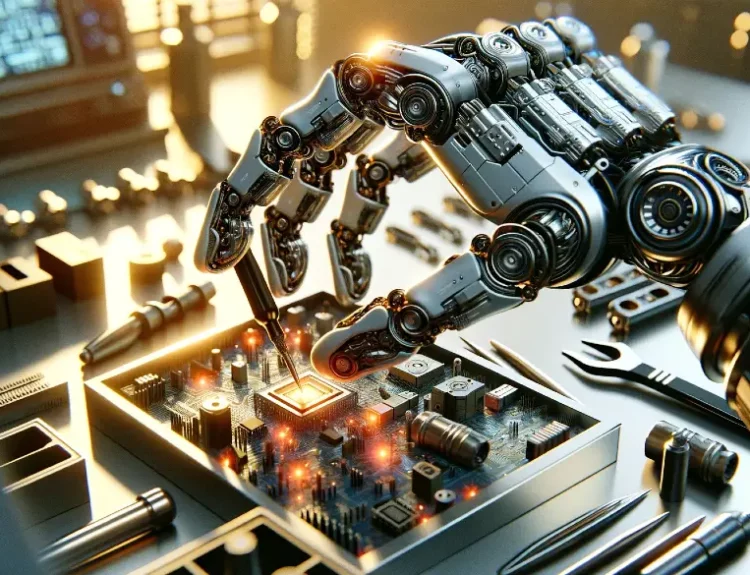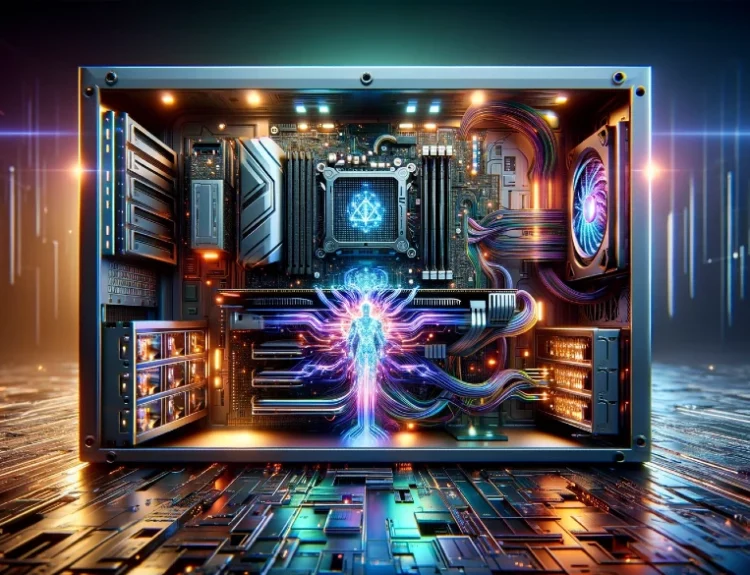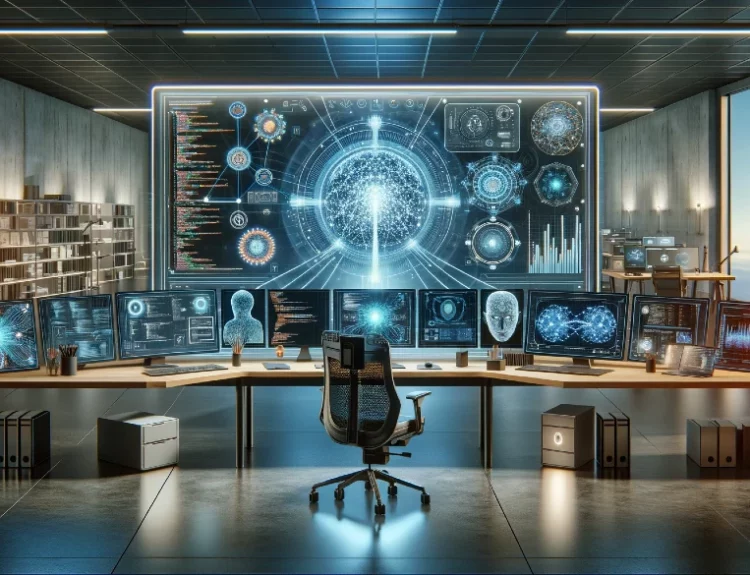Introduction
The relentless march of technology continues, driven in large part by the ever-expanding capabilities of Artificial Intelligence (AI). No longer confined to the realm of software, AI is rapidly making its way into the very building blocks of our computers, fundamentally reshaping the future of hardware development.
This blog dives deep into the exciting world of AI-powered computer parts. We’ll explore how AI is not only accelerating existing components but also paving the way for entirely new hardware architectures, pushing the boundaries of performance and efficiency.
AI in the Age of Hardware
For decades, computers have relied on workhorses like Central Processing Units (CPUs) and Graphics Processing Units (GPUs) to handle complex tasks. While these components are incredibly powerful, the demands of AI workloads have necessitated a new breed of hardware.
Enter the age of AI accelerators. These specialized processors, like Tensor Processing Units (TPUs) and Neural Processing Units (NPUs), are designed from the ground up for the specific needs of AI applications. These AI-driven hardware components boast significant advantages over traditional CPUs and GPUs when it comes to processing massive datasets and performing complex calculations required for tasks like machine learning and deep learning.
But AI’s influence extends far beyond just specialized accelerators. Traditional components are also getting a boost from AI algorithms. These algorithms are being used to optimize various aspects of existing hardware, like dynamic power management and thermal throttling control. Imagine a computer that can intelligently adjust its power consumption based on the workload, maximizing performance while minimizing energy use. This is the power of AI in action.
The Future Landscape
The integration of AI into hardware opens up a vast and exciting future for computing. Here are just a few ways AI is poised to revolutionize the landscape:
- AI and Performance Enhancement: Imagine a computer that can dynamically adjust its components based on the task at hand. With AI at the helm, systems can optimize performance by allocating resources efficiently, ensuring you get the most out of your hardware.
- Advanced AI Systems in Hardware Design: The traditional approach to hardware design is about to undergo a significant shift. AI has the potential to revolutionize the entire process, paving the way for entirely new hardware architectures specifically tailored for AI applications. This could lead to breakthroughs in areas like natural language processing and computer vision.
The Road Ahead
While the integration of AI into hardware presents a wealth of opportunities, there are also challenges to consider. Cost, power consumption, and heat generation are all factors that need to be addressed. Developing AI-powered hardware that is not only powerful but also cost-effective and energy-efficient will be crucial for widespread adoption.
However, the potential rewards far outweigh the challenges. AI has the power to usher in a new era of intelligent hardware solutions, pushing the boundaries of performance and efficiency. Imagine a future where your computer can not only react to your needs but also anticipate them, seamlessly adapting to your workflow and tasks. This is the transformative power of AI in hardware.
Building the Future with Verdict
At Verdict, we believe the future of AI is collaborative. We’re building a platform where machine learning (ML) and generative artificial intelligence (GenAI) evolve through real-world interactions and the insights of our community. Every AI Search, AI chat, and shared result on Verdict contributes to building an AI that understands and grows alongside you.
Your participation on Verdict AI Platform is a vital building block that shapes the future of AI technology. By joining our community, you’re not just using AI, you’re helping to develop it.
Become part of the journey! Sign up for Verdict today and experience the future of AI.
Conclusion
The world of computer parts is on the cusp of a transformative era. AI is no longer a distant concept; it’s rapidly becoming an integral part of hardware development. From optimizing existing components to designing entirely new architectures, AI is pushing the boundaries of what’s possible.
The future of computing is intelligent, efficient, and personalized, and AI is the driving force behind this revolution. As we move forward, the collaboration between humans and AI will be paramount in unlocking the full potential of this powerful technology.
This is just the beginning. For more fascinating insights into the world of AI, explore our blog page! We delve into topics like AI’s Impact on Computer Typing, AI’s Impact on Computer Chip Manufacturing, and many more.
We hope you enjoyed this exploration of AI in computer parts. Stay tuned for future blog posts where we delve deeper into the exciting world of AI technology!
